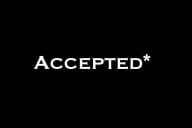You have /5 articles left.
Sign up for a free account or log in.

Man As Thep/iStock/Getty Images Plus
I was recently at Brown University to belatedly celebrate the launch of a book that came out during the pandemic: Erica Durante’s Air Travel Fiction and Film: Cloud People, an entry in Palgrave’s excellent series Studies in Mobilities, Literature, and Culture. I was asked to be a panelist because of my previous writings on the topic, and I was joined by three other scholars from literary and cultural studies whose work related to Durante’s.
The event was like no academic book launch I’d experienced, and it inspired me to think about how we might reimagine this all-too-often rote genre—how we present our new books to the world.
First off, as I entered the building where the event was to take place, I noticed a little man in navy blue and a pilot’s cap waving a boarding pass at me. It turned out to be Durante’s 12-year-old son, Etienne, who was participating in the book launch. That might have been just cute, but because it didn’t end there, the performance became something else entirely.
Inside the small amphitheater where the panel was set up, another small person in navy blue was holding a basket of amenity kits full of travel wipes, a face mask and … a paper airplane, made from a photocopied page from Durante’s book. Again, it all could have been merely precious—but instead these children (there were others sporting yellow tarmac vests, who I learned were the kids of Durante’s colleagues) became part of the event. The multigenerational ambience totally changed the dynamic—and for the better.
Professors, graduate students, undergrads and friends all poured into the room. I think this was the first time since the pandemic that I’d seen a standing-room-only academic event. The table in front was set up traditionally, with name tags and official folders and pens and a carafe of water for us all. It was clearly still an academic panel. But the room was abuzz with excitement for the topic because of the way that Durante had organized all these small details to create an atmosphere that resonated with the topic of her book. (The book, I should pause to say, is a brilliant synthesis of airport and airplane scenes in contemporary literature, art and film—a polyvalent liminal space that Durante terms “the Airworld.” Durante’s own translations of various Spanish, French, German and Italian texts enrich her readings.)
When it was time for the event to officially commence, Durante sounded a two-tone bell that we all recognized from when the cabin doors on an airliner have closed: time for departure. We then each read our formal responses to Durante’s book; she responded, and we had a lively Q&A session—all standard fare. But in the middle, we got a surprise: some of Durante’s students had choreographed a one-minute dance routine—live in-flight entertainment, as it were! It added levity and broke up the papers and Big Ideas. After the panel concluded, we all launched our paper planes into the air, and then a reception out in the foyer allowed everyone to mingle, laugh and congratulate Durante on her book’s publication.
The whole event was not only fun and refreshing, but it also really got me thinking about how we might take more creative risks like this when we organize our academic book launches. Yes, our topics may sometimes be abstruse or labored over for five or 10 years before appearing in print. The process of researching, then writing and publishing a book can be lonely and existential. But there’s no reason to assume that wider audiences may not become intrigued—may not learn something from our work. What Durante’s book launch showed was that by adding some playful beats and unexpected twists to a book launch, you can end up with a bigger and more engaged audience—people, and not just academics, who will remember your book, recommend it to someone beyond the event, and maybe even take away new ideas to put into daily practice.
Over dinner later that evening, I got talking with one of the other panelists, Stuart Burrows, about his forthcoming new book on how promises figure into the work of Henry James. While admittedly a more properly literary and scholarly project, we still started brainstorming ideas about how he could do a book launch that would invite the audience to get engaged in the topic. Why not ask the audience members to make a promise on the spot? Or ask them to remember a promise that they didn’t keep and write it down to perhaps share it (anonymously) with the crowd? And so on … all as a way to compel a wide audience to think with the scholar and appreciate the launch of a new book.
It may sound impossible or far-fetched to think you could engage a wider audience in your narrow or super-focused research. But Durante’s event made me realize that with just a little imagination and some teamwork—for it was absolutely a team effort—we might reimagine the academic book launch as a public forum, as a welcome bridge between campus and everyday life.








